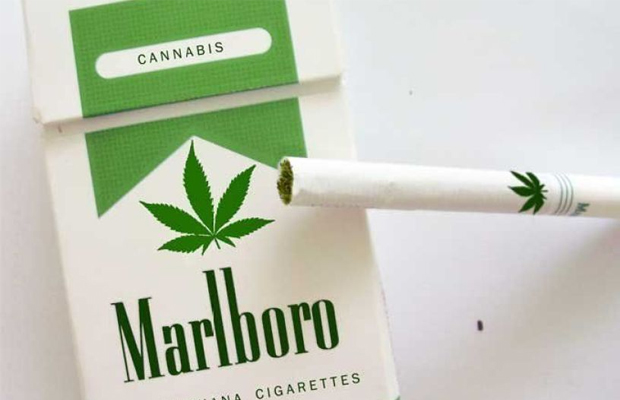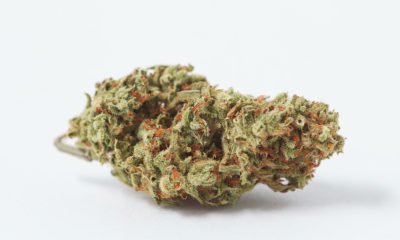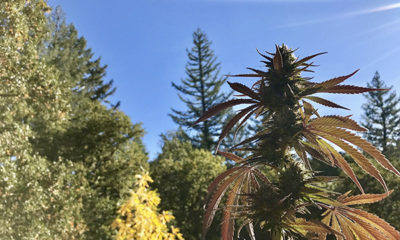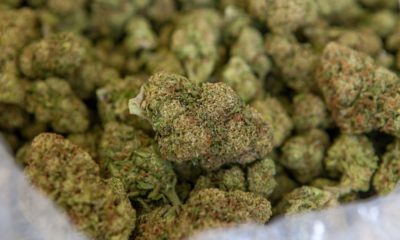
Joint Opinions
Five Things The “Straight” Business World Continues to Get Wrong about Marijuana
As the multi-billion dollar cannabis market transitions above ground, there is no shortage of conflict and confusion while investors and entrepreneurs scramble to get their hands in the legal pot.
The earliest cannabis markets were served by those willing to break the law, not necessarily people who had professional business sense, and the transition into a more mature legal market is now upon us — especially now that the nation has watched the successful launch of adult use legalization in Colorado.
Cannabis activists should embrace the benefits a legal, professionally run market affords such as product consistency, quality, research and the right to possess cannabis without the threat of jail, loss of property or removal of children. Not to mention we could all use the positive environmental impacts of rigorous domestic hemp production, which comes with the added economic bonus of sustainable 21st century growth.
Although some activists and industry veterans are welcoming the investment, others are wary of big money investors who don’t know a thing about cannabis except that it is profitable. Any good business person, however, knows a business cannot be profitable if the entrepreneurs and investors embarking on the project have little to no understanding about the market from which they would like to generate a profit.
Those who have found success in the cannabis industry today have found their success because they have paired research, knowledge and know-how with professional business management.
With the promise of economic opportunity, cannabis is attracting a lot of interest right now. If you are considering getting into the cannabis industry, here are five misconceptions about the industry that are imperative to understand:
1. It’s Not Alcohol
Comparisons with alcohol and cannabis are easy to make. They both thrived on the black market during prohibitions. Cannabis is also often compared to wine; an apt comparison because it has many varieties often produced in small batches in similar regions of California and the West and varies from cheap, generic and alcoholic to rich, unique and expensive.
No two bottles of wine are alike; they each are reflective of their variety, weather patterns and vintner’s skill. While some distinctions can be made — such as white versus red wines and chardonnay versus pinot grigio— processing, packaging, storage and exposure to oxygen also affect the product inside the bottle, in the end the branding on the bottle is ultimately what sets its value and tells customers what they can expect inside it.
In this way cannabis is similar — consistency in cannabis products isn’t predictable the way a cigarette or a Big Mac is, it’s about variety, cultivator’s skill, subtle flavor and scent differences and the range of effects. Consistency isn’t always necessary nor is it always desired.
And, although our president claims he does not believe cannabis is more dangerous than alcohol, in actuality it is far safer. It’s likely safer than even sugar. Not to mention it is far safer to have in your system than alcohol if you are driving. So as a vice intoxicant can we really compare alcohol to marijuana? No.
People who use cannabis often are choosing it as an alternative to alcohol and both substances create a range of behaviors in a range of people. Associations with alcohol are passé to regular cannabis users and just because certain marketing or business strategies are effective for alcohol, they don’t always translate to a cannabis market.
And remember, just because Washington voters agreed the state Liquor Control Board was most apt to run their adult use cannabis program, the program has largely been embroiled in the confusion of implementing the law. This was a predictable folly because… cannabis is not alcohol.
2. It’s Not Tobacco
Rumors have swirled for years that major cigarette manufacturers, such as Phillip Morris, have already purchased land in California’s Emerald Triangle where they intend to start their cannabis mega-plantations to supply the nation with cheap, low-quality, pre-rolled cannabis cigarettes.
Although both products are smoked — often pre-rolled for convenience — that is where the comparisons end. Smoked tobacco use claims 480,000 lives in the U.S. every single year and 16 million people currently suffer from smoking-related illnesses. Cannabis use claims no lives every year and has even been proven to have anti-cancer properties, even when smoked.
Although inevitably there will be a portion of the market that demands low quality, low cost, pre-rolled marijuana cigarettes, the majority will likely move towards more innovative products like tinctures, topicals, oils, ointments, capsules and edibles.
There is so much variety in this market that this sort of endeavor isn’t completely scalable at this time — that is until all 50 states have legal marijuana of one kind or another. It’s also important to remember that most legal cannabis markets are geared towards wellness and medicine, not casual adult use.
Again, like alcohol, the marketing, product development, packaging and distribution don’t (and shouldn’t) fit the tobacco model.
3. Growing Isn’t Easy, nor Is It Cheap
Repeatedly in mainstream business articles about the cannabis industry the phrase “marijuana is easy to grow” is always a glaring fallacy prominently displayed somewhere near the nut graph. Perhaps this idea was encouraged by the slang term “weed”, which implies rapid growth. That is partially true —marijuana is easy to grow, good marijuana is not.
Growing good, market-ready cannabis means not just an understanding of botany and horticulture, but also an understanding of the complex world of indoor cultivation that evolved around the prohibition of the cultivation of this plant. Indoor cultivation is extremely expensive. Growers can rack up thousands in electricity bills to just power the lights in even a small garden.
There is arguably no greater innovation in the world of plant cultivation than in the cannabis industry. The forced move indoors promoted rapid developments in indoor horticultural technology and upped the ante for quality in legal markets.
But, there has also been significant easing of cannabis prohibition laws — it’s probably going to be much more cost effective to move large-scale production outdoors and in greenhouses as the producers scale to meet not just state, but national demand.
Unfortunately this also means the price of cannabis is going to have to drop and eventually there will be less room in the market for smaller producers yielding lower quality product. That’s only a bad thing to the small growers producing low quality product. As the market moves completely above ground the price will stabilize, but don’t expect that to happen anytime soon.
The takeaway here is the same as in California’s Gold Rush in the 1840s and the Green Rush in 2009—don’t quit your day job unless you really know what you are doing (or have hired someone who does). The real winners of those rushes were the providers of “picks and shovels.” Very few people will get rich from growing marijuana in the legal market.
4. Know the Basics (at least)
Before starting a cannabis business you must know a few things, the first being the market is extremely diverse. No, it’s really diverse. The patient lines at legal dispensaries are usually a rainbow of races, ages, gender identity, socioeconomic status and cultural identification.
The product offerings are constantly evolving and maturing, if you blink you will miss something new. Having a basic knowledge of cannabis applications will help you to understand the value of a product or an idea being presented to you in a more mature way.
Here is a basic list of the things you should probably know if you want to get rich in the cannabis industry: the endocannabinoid system and how it works, effects of different cannabinoids and terpenes, the history of medical marijuana and those who made it happen, the law, cultivation cycles, the products already thriving on the market and general attitudes about cannabis regionally.
In this industry or any other, never underestimate the value of market research.
5. Not All Cannabis Users Are Young White Men
Sure, in the past the marijuana market was mostly white men ages 18 to 24 — or at least that has traditionally been the demographic that has consistently been out-of-the-closet about their cannabis use over most of the later part of the last century.
This association largely placed cannabis use in the realm of “frat” culture, something even Republican politicians admit to partaking in, at least in their wild and exclusionary college days. Most anyone else publicly admitting to using or possessing cannabis could fear arrest or prosecution for the decision to use. Black Americans are 3.7 times more likely to be arrested for cannabis use or possession than white Americans even though they use at similar rates — which may play into our distorted idea of who uses and sells cannabis.
Women spend $7 trillion on consumer goods annually and over the next decade are set to control more than two-thirds of consumer wealth. Appealing to women isn’t just politically correct it’s financially sound.
And, as wise dispensary owners are learning, appealing to every other demographic (women, people of color, seniors, rich, poor) is a far more lucrative strategy that allows them to control a greater share of their market.
What we do know about the cannabis market’s demographics is that it is wildly diverse in states that permit its sales in any form. How the industry reaches out to different demographics is important and can often walk the fine line of pandering.
Diversity means incorporating the diverse opinions of the market into product development, sales and management — not just marketing. Marketing to a minority audience without legitimately incorporating their needs into the service or product is pandering, and not a long-term strategy for financial success.
The real winners in this industry will be those who build a solid reputation for quality, professionalism and a solid understanding of the wonderful word of cannabis.
What do you think? Tell us in the comments below.
























